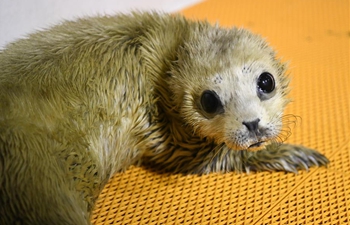HOHHOT, April 7 (Xinhua) -- Over 800 relict gulls migrated to Ordos wetlands in early April in north China's Inner Mongolia Autonomous Region, marking the first mass return of this migratory birds in 13 years, local authorities said Sunday.
The gull, featuring a black-hooded head and white body, is an endangered species and a national first-class protected animal. Most of its populations winter in Bohai Bay in China.
"In spring, the birds fly to northwestern China, Mongolia and Kazakhstan, nesting generally on islets in the lack of deserts," said Xing Xiaojun, director of the administration of the Ordos Relict Gull Reserve in the city of Ordos.
An island in the Taolimiao-Araxan Lake of the reserve is renowned as a vital habitat for gull breeding.
"There were once over 10,000 breeding gulls, accounting for over half of the whole population," said Xing. However, since 2006 few nests of the species can be seen as the island disappeared as the Lake shrank.
Ordos has adopted a series of measures to protect the wetland in recent years, such as dam removal and water diversion from the Yellow River.
At present, the lake, with its water area up to 7 square km, has seen boosted diversity of the birds. "Over 20,000 migrant birds came here last autumn, as the wetland's environment has improved," said Ren Yongqi, a chief of a protection station in the reserve.
The wetland is also home to 15,000 other birds, according to Xing. More efforts have been made to protect the breeding birds from disturbances.
The Ordos Relict Gull Reserve, as the world's only natural reserve for relict gulls, was listed an internationally recognized wetland reserve in 2002.

















